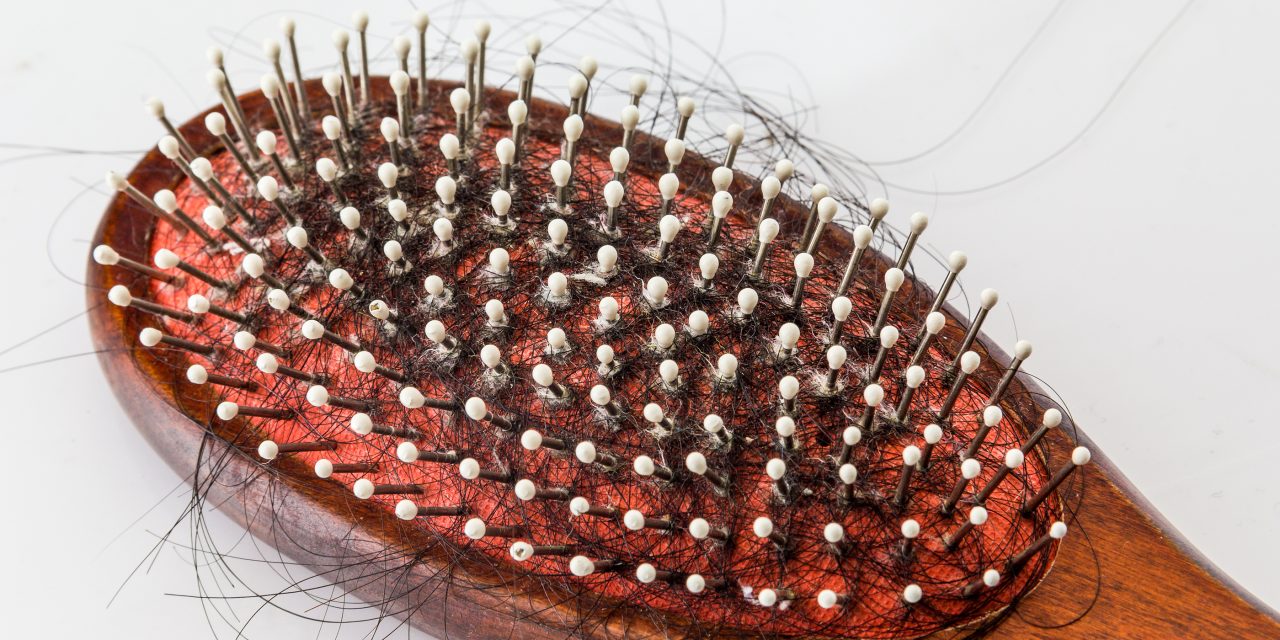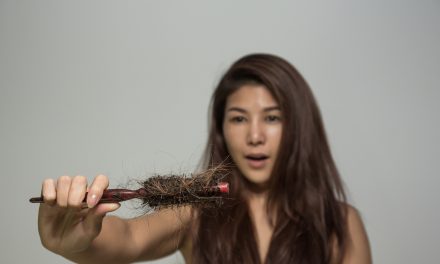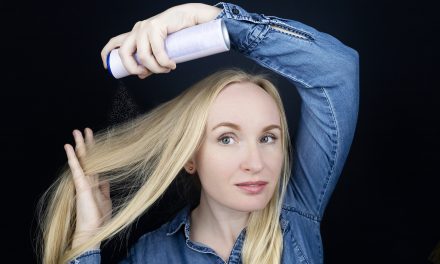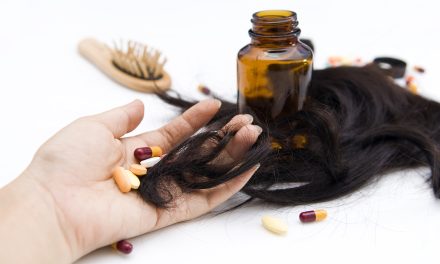Hair loss is a common issue that affects both men and women, often causing concerns about appearance and self-esteem.
It usually occurs due to a combination of genetic factors and hormonal changes. While genes play a significant role, other factors like stress, nutrition, and certain medical treatments can also contribute to hair thinning and baldness.
Another key aspect in understanding hair loss is recognizing its different patterns and causes for men and women.
Men typically experience a receding hairline or bald patches, often linked to hormones and age. Women, on the other hand, might notice thinning hair across the scalp, which can be due to hormonal fluctuations, pregnancy, or menopause. Identifying these variations is crucial in determining the best management and treatment strategies.
Exploring the various causes of hair loss and the available treatments helps individuals make informed decisions.
Options range from medical treatments that slow hair loss to lifestyle changes that improve hair health. By addressing these factors, many can maintain or restore their hair, boosting their confidence and well-being.
Key Takeaways
- Genetic and hormonal changes are leading causes of hair loss.
- Men and women experience different patterns of hair loss.
- Treatments and lifestyle changes can help manage hair loss.
Understanding Hair Loss
Hair loss can occur due to various factors such as genetic predisposition, hormonal changes, and differences in the hair growth cycle. Being aware of these factors can help in managing and addressing hair loss effectively.
Hair Growth Cycle
The hair growth cycle consists of three main phases: anagen, catagen, and telogen.
During the anagen phase, hair actively grows for several years. This is followed by the short catagen phase, where hair growth slows, and the hair follicle shrinks. Lastly, the telogen phase is the resting phase, where older hairs fall out as new hairs begin their growth.
Disruptions in this cycle can lead to conditions like alopecia, where hair thinning or baldness occurs.
Types of Hair Loss
There are several types of hair loss.
Androgenetic alopecia is the most common type and is often referred to as male or female pattern baldness. This hereditary condition occurs gradually and affects millions worldwide.
Alopecia areata involves sudden patchy hair loss, often linked to autoimmune responses. Another form, telogen effluvium, occurs when stress or illness pushes large numbers of hair follicles into the telogen phase, causing noticeable shedding.
Genetic Factors
Genetic factors play a significant role in hair loss.
Hereditary hair loss, such as androgenetic alopecia, is attributed to specific genes passed from one generation to another. These genes can influence the sensitivity of hair follicles to hormones like dihydrotestosterone (DHT), leading to shorter anagen phases and thinner strands. Studies emphasize the importance of understanding family history in predicting genetic susceptibility to baldness and giving insight into the underlying genetic influences affecting hair health.
Common Causes of Hair Loss
Hair loss can result from various factors, including changes in hormones and certain health conditions. Diet and nutrient intake also play significant roles, as deficiencies can weaken hair structure.
Hormonal Changes
Hormonal changes, such as those experienced during pregnancy and menopause, can greatly impact hair health.
During pregnancy, increased levels of hormones often enhance hair growth, leading to fuller and thicker hair. After childbirth, hormone levels drop, sometimes resulting in noticeable hair loss known as postpartum hair fall.
Menopause also affects hair due to a reduction in estrogen and progesterone, which can cause hair to thin. Stress can exacerbate these effects by triggering hormone imbalances. Women with polycystic ovary syndrome often experience hair thinning due to high androgen levels, further highlighting the role hormones play in hair health.
Medical Conditions
Various medical conditions are linked to hair loss, with autoimmune diseases being a significant contributor.
Alopecia areata causes sudden, patchy hair loss and can occur at any age.
Thyroid disorders, such as hyperthyroidism and hypothyroidism, can disrupt the hair growth cycle, resulting in thinning hair or bald patches. Other conditions, like lupus, may cause inflammation that affects hair follicles. Additionally, some medications for treating these conditions can also lead to hair loss, complicating the issue further.
Nutritional Deficiencies
A balanced diet is crucial for maintaining healthy hair, as nutritional deficiencies can lead to hair thinning or loss.
Iron deficiency, for example, reduces the amount of red blood cells, leading to poor oxygen supply to hair follicles and contributing to thinning hair.
Deficiencies in vitamins such as B12, and folic acid similarly affect hair health. Poor nutrition, in general, can weaken hair shafts and slow down growth. Ensuring a diet rich in essential vitamins and minerals can help improve hair strength and prevent loss, highlighting the importance of nutrition in maintaining healthy hair.
Hair Loss in Men and Women
Hair loss affects both men and women, though the patterns and causes can differ. Androgenic alopecia is common in both genders but presents differently. Treatments such as minoxidil offer solutions, though responses can vary.
Male Pattern Baldness
Male pattern baldness, a frequent form of hair loss in men, often has a genetic basis and is linked to androgens.
Men typically notice a receding hairline and thinning at the crown. This pattern progresses over time, affecting more of the scalp.
Treatments include medications like minoxidil and finasteride. Minoxidil stimulates hair growth, while finasteride reduces androgen levels. These treatments can slow hair loss, though they may not restore all hair loss.
Female Pattern Baldness
Female pattern baldness affects women differently. It usually involves overall thinning rather than patches of baldness.
The hair thinning tends to occur on the top and crown of the scalp, and the front hairline usually remains intact. This condition can be influenced by hormones and genetics.
Some women use minoxidil to encourage hair growth. Lifestyle changes, such as a balanced diet rich in nutrients, may also help. Stress reduction techniques can play a role in managing hair loss.
Hair Loss in Women
Hair loss in women can result from various factors, including hormonal changes, stress, nutritional deficiencies, and medical conditions.
Unlike male balding, it can be more diffuse, affecting different areas. Conditions like telogen effluvium cause temporary shedding, often linked to stress or childbirth.
Alopecia areata, an immune-related condition, leads to patches of hair loss. Women experiencing hair loss might also explore options like hairpieces or cosmetic solutions to improve the appearance and volume of their hair. Supporting treatments include proper hair care and avoiding heat styling that can damage hair.
Non-Genetic Factors
Hair loss can be influenced by various non-genetic factors. These include autoimmune conditions, environmental influences, and lifestyle choices, which all contribute to changes in hair growth and shedding patterns.
Autoimmune Conditions
Certain autoimmune conditions, like alopecia areata, can lead to hair loss. In alopecia areata, the immune system mistakenly attacks hair follicles, causing patchy hair loss. This condition can occur suddenly and may result in complete baldness in some cases.
Other conditions, such as lupus, also have the potential to trigger hair loss. The body’s immune response in these situations can harm hair follicles and affect the natural hair growth cycle.
Trichotillomania, although not an autoimmune disease, involves compulsive hair pulling, leading to localized hair loss.
Environmental Factors
Environmental factors, including fungal infections like tinea capitis, can contribute to hair loss.
This infection, prevalent in children, leads to scalp scaling and hair breakage. The fungi invade hair shafts, causing them to become brittle and fall out.
Environmental pollutants and chemical exposure can also impact hair health. Pollutants damage the hair shaft and scalp, hindering hair growth.
Hair treatments, such as dyes and perms, may weaken hair if used excessively, leading to breakage and loss. Excessive sun exposure can further weaken hair strands, causing them to become dry and fragile.
Lifestyle Influences
Lifestyle choices significantly impact hair health.
Telogen effluvium, a form of hair loss, occurs when individuals undergo emotional shock or emotional stress. This condition pushes hair follicles into a resting phase, leading to increased shedding. Hair usually regrows once stress is managed, but it can be distressing.
Poor dietary habits and rapid weight loss can cause nutritional deficiencies, impacting hair growth. Inadequate intake of essential nutrients like iron, zinc, and protein leads to weaker hair strands.
Additionally, lack of exercise and unhealthy sleep patterns can disrupt the body’s natural balance, affecting hair health. Adopting a balanced diet and managing stress can help maintain healthy hair growth.
Medical Treatments and Hair Loss
Hair loss can occur as a side effect of various medical treatments. This includes the use of certain medications, as well as more intensive treatments like chemotherapy and radiation. Understanding the impact of different treatments helps in managing and addressing hair loss effectively.
Effects of Medications
Certain medications can lead to hair loss as an unwanted side effect.
Birth control pills and anticoagulants are known to affect the hair growth cycle. Steroids can also alter hormones, leading to hair thinning.
Other drugs include blood pressure medications, which might disrupt normal hair growth.
It’s important for individuals to discuss with their healthcare providers about the potential risks to their hair before starting any medication. In some cases, alternative treatments with fewer side effects might be available.
Chemotherapy and Radiation
Chemotherapy targets rapidly dividing cancer cells but also affects other fast-growing cells, like those in hair follicles. This can lead to significant hair loss during treatment. The severity can vary based on the type and dosage of the chemotherapy drugs used.
Radiation therapy can cause hair loss if used on the head. Unlike chemotherapy, which can cause hair loss all over the body, radiation is more localized. Hair may regrow after these treatments, but it could be different in texture or color.
Other Medical Treatments
In addition to medications, specific medical treatments can be linked to hair loss.
Some anti-inflammatory drugs used for chronic conditions can disrupt hair growth. Medical conditions like thyroid disorders can also cause thinning hair if not properly managed.
Although not widely known, certain antidepressants and treatments for high cholesterol also pose risks.
Understanding the scope of these treatments and their potential side effects allows individuals to manage expectations and explore possible interventions. Consulting with healthcare providers is key for tailored advice.
Managing and Treating Hair Loss
There are various approaches to managing hair loss, including pharmaceutical, surgical, and alternative treatments. Identifying the right option depends on individual needs and the cause of hair loss.
Pharmaceutical Treatments
Pharmaceutical treatments are among the most popular methods for addressing hair loss.
Minoxidil, commonly known as Rogaine, is used to stimulate hair growth and slow hair thinning. It is available for both men and women. This treatment is applied directly to the scalp and is especially effective in cases of telogen effluvium, a temporary form of hair loss.
Finasteride is another drug that targets hair loss, mainly in men. It works by preventing the conversion of testosterone to DHT, a hormone linked to hair thinning. Consistent use can help maintain existing hair and support regrowth. Both treatments require ongoing use for sustained results.
Surgical Options
Hair transplant surgery offers a more permanent solution for those with advanced hair loss. The procedure involves moving hair follicles from a dense area to a balding part of the scalp.
The two main techniques, Follicular Unit Transplantation (FUT) and Follicular Unit Extraction (FUE), vary in how follicle units are harvested.
FUE, the more modern approach, involves removing individual follicles, reducing visible scarring and offering a quicker recovery. Transplanted hairs eventually grow like natural hair.
This option is suited for individuals with thinning hair who have enough donor hair for transplantation. While effective, the procedure can be costly and requires careful planning and consultation with a qualified surgeon.
Alternative Therapies
Alternative therapies are also available for those seeking options other than pharmaceuticals or surgery. Laser therapy can stimulate hair growth by increasing blood flow to hair follicles.
This non-invasive treatment usually involves sessions spaced over weeks or months.
Platelet-rich plasma (PRP) therapy employs a technique where a patient’s blood is processed to concentrate platelets rich in growth factors. When injected into the scalp, PRP can promote healing and regeneration of hair follicles.
While promising, the effectiveness of these therapies can vary, and they often work best as part of a comprehensive treatment plan.
Prevention and Maintenance of Healthy Hair
Maintaining healthy hair involves a combination of proper hair care, a balanced diet, and regular medical check-ups. By integrating these factors, individuals can promote hair strength and minimize hair loss.
Hair Care and Products
Choosing the right hair products is crucial. Shampoos and conditioners designed for specific hair types can improve overall hair health.
Look for products free from harsh chemicals like sulfates and parabens, as these can damage hair over time. Gentle cleansing helps in retaining natural oils, ensuring hair remains moisturized.
Avoid excessive heat styling and chemical treatments which can weaken hair. Instead, limit the use of hair tools like straighteners and curling irons.
When using them, products like heat protectants can minimize damage. Regularly trimming split ends prevents further breakage, maintaining hair’s natural texture and shine.
Diet and Lifestyle
Diet plays a vital role in hair health. Deficiencies in nutrients like biotin and vitamin D can lead to hair thinning.
Including foods rich in vitamins and minerals such as nuts, eggs, and leafy greens supports hair growth. Ensuring adequate protein intake is also essential, as hair is primarily composed of keratin, a protein.
Staying hydrated and managing stress through activities like exercise and meditation can improve hair condition.
Poor lifestyle choices, such as smoking or excessive alcohol consumption, may negatively affect hair. Maintaining a balanced diet and healthy lifestyle supports overall well-being, contributing to stronger, healthier hair.
Regular Medical Consultations
Visiting a dermatologist or healthcare professional for regular check-ups can help prevent hair loss. Professionals can identify potential issues early, such as nutrient deficiencies or scalp conditions that might affect hair growth.
They can recommend treatments or supplements, like vitamin D or iron, if necessary.
Consultations also provide an opportunity to discuss any concerns about hair loss or changes in hair quality. Personalized advice from a professional can guide individuals in choosing the right products and lifestyle changes tailored to their specific needs, ensuring optimal hair health.
Frequently Asked Questions
Hair loss can be caused by a range of factors including genetics, hormonal changes, nutrient deficiencies, and underlying health conditions. Various treatments and lifestyle changes can help manage and prevent hair loss effectively.
What factors contribute to hair loss in men?
Hair loss in men is often linked to genetics, particularly male pattern baldness. Hormonal changes involving androgens also play a significant role. Stress and certain medical conditions can further contribute to this issue.
How can hormonal changes lead to hair loss in women?
Hormonal fluctuations, such as those occurring during pregnancy or menopause, can impact hair growth in women. Conditions like polycystic ovary syndrome (PCOS) can also lead to thinning hair. Changes in hormone levels after stopping oral contraceptives can similarly affect hair health.
Which nutritional deficiencies are linked to hair thinning?
Deficiencies in nutrients like iron, zinc, and vitamin D are commonly associated with hair thinning. Lack of protein and essential fatty acids can also lead to weakened hair strands, contributing to increased hair fall.
What are effective treatments for managing hair fall?
Effective treatments for hair fall include medications like minoxidil and finasteride. Hair transplantation and laser therapy are other options. Proper hair care and using mild shampoos can aid in keeping hair healthy and minimizing loss.
How can one prevent hair loss through dietary choices?
A balanced diet rich in vitamins and minerals can help prevent hair loss. Foods high in iron, zinc, and vitamin B can support hair strength. Omega-3 fatty acids from fish and nuts can also nourish the scalp, promoting healthier hair growth.
What underlying health conditions can result in hair loss?
Conditions such as thyroid disorders, lupus, and diabetes can lead to hair loss.
Scalp infections and autoimmune diseases like alopecia areata can also cause noticeable hair fall.
It’s important to consult a healthcare provider for an accurate diagnosis if underlying health conditions are suspected.


















